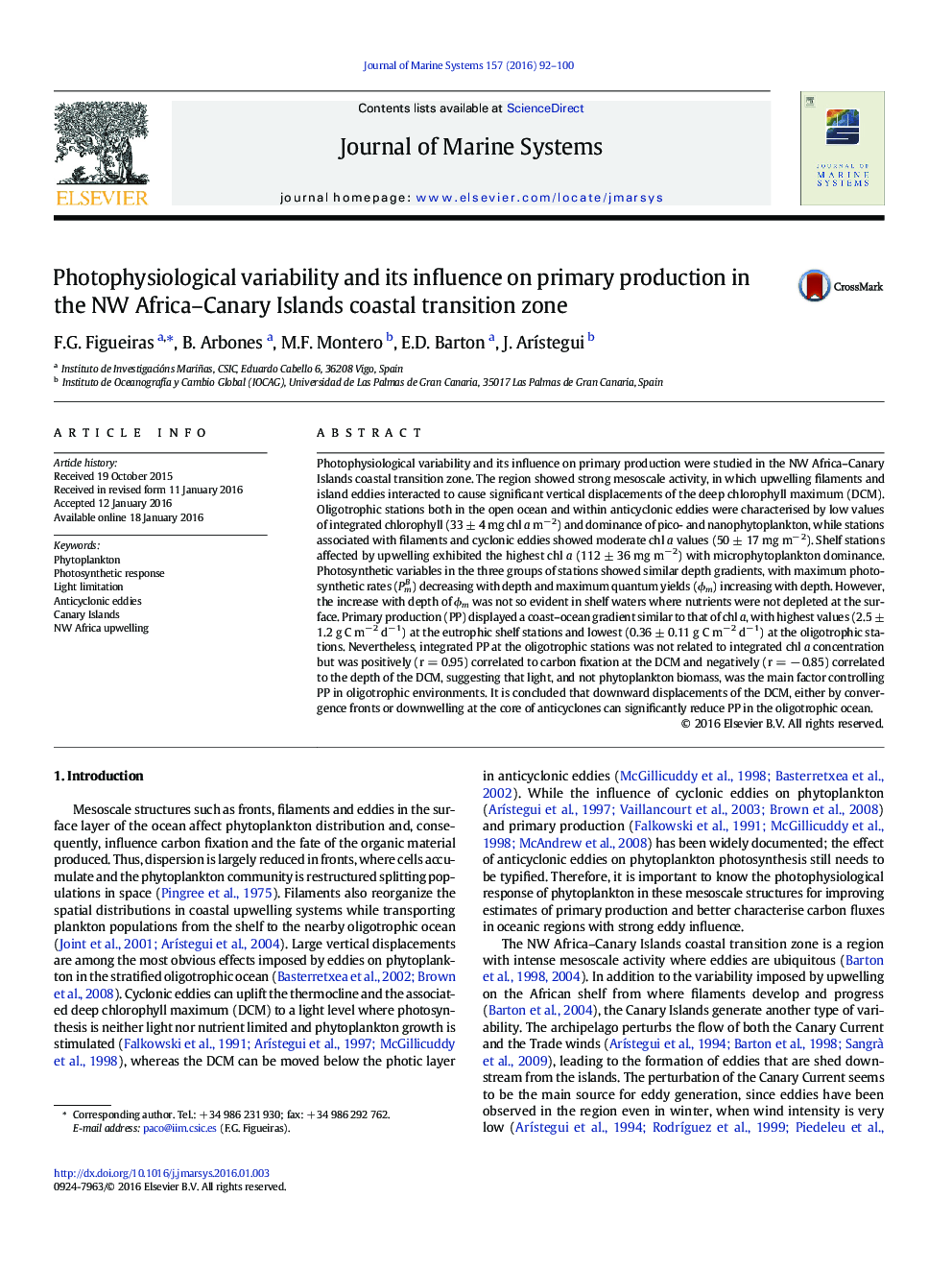| Article ID | Journal | Published Year | Pages | File Type |
|---|---|---|---|---|
| 4547928 | Journal of Marine Systems | 2016 | 9 Pages |
•We characterised phytoplankton photophysiology in the NW Africa–Canary Island region.•Three sub-regions were identified in a coast–ocean (eutrophic–oligotrophic) gradient.•Different photophysiological responses were recorded along this gradient.•Carbon fixation was negatively related to the depth of the DCM in oligotrophic waters.•Downward displacements of the DCM in anticyclones reduce primary production.
Photophysiological variability and its influence on primary production were studied in the NW Africa–Canary Islands coastal transition zone. The region showed strong mesoscale activity, in which upwelling filaments and island eddies interacted to cause significant vertical displacements of the deep chlorophyll maximum (DCM). Oligotrophic stations both in the open ocean and within anticyclonic eddies were characterised by low values of integrated chlorophyll (33 ± 4 mg chl a m− 2) and dominance of pico- and nanophytoplankton, while stations associated with filaments and cyclonic eddies showed moderate chl a values (50 ± 17 mg m− 2). Shelf stations affected by upwelling exhibited the highest chl a (112 ± 36 mg m− 2) with microphytoplankton dominance. Photosynthetic variables in the three groups of stations showed similar depth gradients, with maximum photosynthetic rates (PmB) decreasing with depth and maximum quantum yields (ϕm) increasing with depth. However, the increase with depth of ϕm was not so evident in shelf waters where nutrients were not depleted at the surface. Primary production (PP) displayed a coast–ocean gradient similar to that of chl a, with highest values (2.5 ± 1.2 g C m− 2 d− 1) at the eutrophic shelf stations and lowest (0.36 ± 0.11 g C m− 2 d− 1) at the oligotrophic stations. Nevertheless, integrated PP at the oligotrophic stations was not related to integrated chl a concentration but was positively (r = 0.95) correlated to carbon fixation at the DCM and negatively (r = − 0.85) correlated to the depth of the DCM, suggesting that light, and not phytoplankton biomass, was the main factor controlling PP in oligotrophic environments. It is concluded that downward displacements of the DCM, either by convergence fronts or downwelling at the core of anticyclones can significantly reduce PP in the oligotrophic ocean.
